Digital marketing has undergone a significant transformation over the past few years, driven by advancements in technology, shifts in consumer behavior, and changes in data privacy regulations. What once relied heavily on traditional SEO, pay-per-click (PPC) advertising, and social media marketing has now expanded into AI-driven automation, hyper-personalization, and immersive experiences like augmented reality (AR) and the metaverse. Brands that once focused on mass marketing now prioritize data-driven strategies that offer personalized and interactive engagement.
As we move into 2025, the future of digital marketing staying ahead of emerging trends is crucial for businesses aiming to maintain a competitive edge. The rapid evolution of digital marketing means that strategies that worked yesterday may not be effective tomorrow. With AI reshaping content creation, social commerce revolutionizing e-commerce, and data privacy concerns forcing brands to rethink targeting methods, marketers must embrace innovation and adaptability to succeed.
In this blog, we’ll explore the key trends shaping the future of digital marketing in 2025 and how businesses can leverage them to stay relevant and thrive in an ever-changing digital landscape.
-
Artificial Intelligence (AI) and Automation
In the future of digital marketing Artificial intelligence (AI) and automation are redefining the way brands connect with consumers. In 2025, AI will continue to drive efficiency, enhance personalization, and improve customer experiences across multiple digital marketing channels. Then’s how AI and robotization are shaping the unborn
AI-Driven Content Creation, Chatbots, and Customer Service
- AI-powered tools like ChatGPT and Jasper are revolutionizing content creation, enabling brands to generate high-quality blog posts, social media captions, and ad copy in seconds.
- Chatbots and AI-driven virtual assistants provide instant customer support, improving response times and reducing the need for human intervention.
- Voice and image recognition capabilities are enhancing chatbot interactions, making them more intuitive and human-like.
Personalized Marketing with AI-Powered Data Analytics
- AI-driven analytics tools can process vast amounts of customer data to deliver hyper-personalized experiences.
- Predictive analytics helps marketers anticipate customer behavior, allowing for proactive engagement.
- AI-powered recommendation engines (like those used by Netflix and Amazon) enable brands to suggest relevant products and content based on user preferences.
Automation Tools for Email Marketing, Social Media, and Ad Optimization
- AI-driven email marketing platforms use behavioral triggers to send personalized messages at the right time.
- Social media automation tools help schedule posts, analyze engagement, and suggest content based on audience insights.
- AI-powered ad optimization adjusts bids, refines targeting, and enhances creatives in real-time to maximize ad performance.
As AI continues to evolve, marketers who embrace automation and machine learning will gain a competitive advantage. Leveraging AI-driven tools can lead to higher efficiency, increased engagement, and ultimately, better business outcomes from the future of digital marketing.
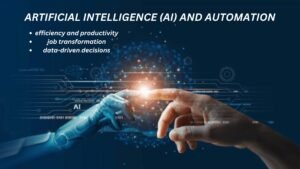
-
Voice Search Optimization
In the future of digital marketing voice-enabled devices like Amazon Alexa, Google Assistant, and Apple’s Siri become more prevalent, voice search is reshaping how users find information online. Simultaneously, conversational marketing—powered by AI chatbots and virtual assistants—is revolutionizing customer interactions. In 2025, businesses must adapt their digital marketing strategies to stay ahead in this voice-first era.
The Rise of Voice Search and Impact on SEO Strategies
- More consumers are using voice search for quick, hands-free queries, especially for local searches (e.g., “Where’s the nearest coffee shop?”).
- Traditional keyword-based SEO is shifting toward natural language processing (NLP) to accommodate conversational queries.
- Featured snippets and position zero rankings are more crucial than ever, as voice assistants often pull responses from top search results.
- Marketers must optimize for long-tail keywords and question-based queries (e.g., “What are the best marketing trends for 2025?”).
Conversational Marketing Through AI-Powered Chatbots and Virtual Assistants
- AI-driven chatbots are enhancing customer engagement by providing instant responses, handling inquiries, and even processing transactions.
- Virtual assistants, powered by AI and machine learning, can personalize interactions based on past user behavior.
- Conversational marketing fosters real-time, two-way communication, improving customer experience and increasing conversion rates.
Optimizing Content for Voice Search Queries
- Use conversational and natural language in website content to match how users speak.
- Implement structured data (schema markup) to help search engines understand and display relevant information.
- Optimize for local SEO, as many voice searches involve location-based queries.
- Create FAQ-style content that answers common questions concisely, increasing the chances of being featured in voice search results.
As voice search continues to grow, brands that optimize their digital presence for conversational queries and leverage AI-powered chat solutions will stand out in 2025. Voice-first marketing isn’t just a trend—it’s the future of customer engagement
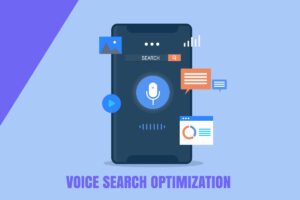
-
The Dominance of Video Marketing
In 2025, video and interactive content will continue to dominate the future of digital marketing as consumer preferences shift towards engaging, immersive, and easily digestible formats. Brands that prioritize dynamic content strategies will capture more attention and drive higher engagement rates.
Short-Form Video Dominance
- Platforms like TikTok, Instagram Reels, and YouTube Shorts are leading the way in short-form video content.
- Consumers prefer snackable, engaging, and authentic videos that deliver value in under 60 seconds.
- AI-driven video editing tools and automated captions make video production easier and more accessible for brands.
- Storytelling remains key—brands should focus on behind-the-scenes content, user-generated content (UGC), and viral challenges.
Live Streaming and Real-Time Engagement Strategies
- Live streaming on Instagram, TikTok, Facebook, and LinkedIn fosters real-time audience interaction.
- Q&A sessions, product launches, and live shopping experiences create a sense of urgency and exclusivity.
- Influencer collaborations via live streams enhance brand credibility and expand reach.
- AI-powered engagement tools help brands personalize interactions and respond instantly to viewer comments.
Interactive Content: Polls, Quizzes, AR/VR Experiences
- Polls and quizzes increase audience participation, helping brands collect valuable customer insights.
- Augmented Reality (AR) and Virtual Reality (VR) create immersive brand experiences (e.g., virtual try-ons, 3D product views).
- Interactive infographics and shoppable videos streamline the customer journey, making it easier to convert engagement into sales.
- Gamified experiences (e.g., spin-to-win promotions, AR filters) boost engagement and encourage social sharing.
The future of digital marketing audiences crave more interactive, real-time experiences, brands that embrace video and interactive content will build deeper connections, drive conversions, and stay ahead in 2025’s competitive landscape.

-
The Rise of the Metaverse and Augmented Reality (AR)
In the future of digital marketing technology advances, Augmented Reality (AR), Virtual Reality (VR), and the metaverse are redefining the digital marketing landscape. These immersive experiences allow brands to create deeper connections with consumers, in the future of digital marketing offering interactive shopping, branded virtual spaces, and next-level engagement. In 2025, businesses that integrate these technologies will stand out in an increasingly digital world.
How AR and VR Are Transforming the Digital Shopping Experience
- AR-powered virtual try-ons (e.g., beauty brands like Sephora and fashion retailers like Nike) allow consumers to see how products look on them before purchasing.
- VR-based showrooms and immersive brand experiences let customers explore products in 3D environments, improving purchase confidence.
- AR filters and interactive content on social media platforms like Instagram and Snapchat drive engagement and encourage users to share branded experiences.
The Role of the Metaverse in Branding and Marketing Strategies
- The metaverse offers virtual storefronts, branded experiences, and immersive events, enabling deeper consumer interactions.
- Companies are using NFTs and blockchain technology for digital collectibles, loyalty programs, and exclusive brand perks.
- Gamified experiences within virtual worlds (e.g., branded challenges in Roblox or Fortnite) create engagement and brand affinity among younger audiences.
Real-World Examples of Brands Successfully Using These Technologies
- Nike’s” Nikeland” in Roblox — a virtual world where druggies can try digital lurkers and engage in ingrained challenges.
- IKEA’s AR-powered” IKEA Place” app, it allows guests to fantasize about cabinetwork in their homes before buying.
- Gucci’s virtual fashion collections in the metaverse, enabling users to purchase and wear digital clothing in online spaces.
- Snapchat’s AR lenses, which brands like Adidas and L’Oréal use to create interactive, shoppable experiences.
In the future of digital marketing AR, VR, and the metaverse continue to evolve, brands that embrace immersive and interactive future of digital marketing strategies will captivate audiences, boost engagement, and drive innovation in 2025
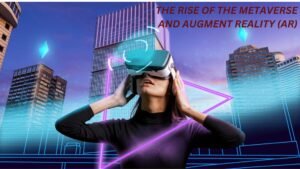
-
Privacy-First Marketing and Data Protection
In the future of digital marketing with growing concerns over consumer privacy and stricter data protection regulations, 2025 marks a new era for digital marketing. The phase-out of third-party cookies, increasing legal frameworks, and heightened demand for transparency mean that brands must rethink their data strategies while maintaining consumer trust.
The Phasing Out of Third-Party Cookies and Its Impact
Google is set to eliminate third-party cookies in Chrome, following Apple’s privacy updates in Safari and iOS.
Digital advertisers will lose access to traditional tracking methods, impacting targeted advertising and retargeting campaigns.
In the future of digital marketing brands that rely heavily on third-party data will need to shift toward privacy-first solutions to maintain personalization.
How Brands Can Adapt by Leveraging First-Party Data
- Collecting direct customer insights through newsletters, loyalty programs, and interactive experiences (e.g., quizzes, surveys).
- Implementing customer relationship management (CRM) systems to centralize and analyze first-party data.
- Future of digital marketing using AI and machine learning to create predictive models and enhance personalized marketing without violating privacy regulations.
- Exploring alternative targeting methods like contextual advertising, which delivers ads based on website content rather than user behavior.
- Building Trust Through Transparency and Ethical Data Practices
- Clearly communicating privacy policies and data usage in a user-friendly way.
- Offering customers more control over their data, including opt-in choices and easy-to-manage preferences.
- Emphasizing ethical marketing by being transparent about how data is collected, stored, and used.
- Adopting zero-party data strategies, where users willingly provide their information in exchange for value (e.g., personalized offers, gated content).
- As data privacy becomes a central concern, brands that prioritize ethical data collection, transparency, and first-party strategies will build stronger consumer relationships and gain a competitive advantage in 2025’s evolving future of digital marketing landscape.
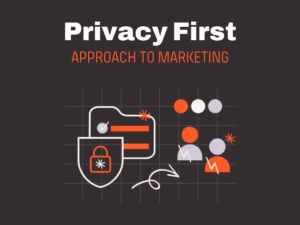
Influencer and Community-Driven Marketing
In the future of digital marketing, The influencer and creator economy continues to evolve, shaping the way brands connect with audiences. In 2025, authenticity, niche influence, and AI-driven innovation will redefine influencer marketing. Brands must adapt by prioritizing genuine connections, community-driven content, and emerging digital personalities to stay relevant.
The shift from Macro to Micro and Nano Influencers
- Micro (10K–100K followers) and nano influencers (1K–10K followers) are gaining traction due to their higher engagement rates and niche audiences.
- Unlike celebrity endorsements, smaller influencers offer more authentic and trusted recommendations, leading to better conversion rates.
- Brands are focusing on multiple micro-influencer collaborations rather than investing heavily in one macro-influencer campaign.
- Long-term partnerships help brands build trust and consistency instead of one-off sponsored posts.
- Co-branded product lines and creator-led campaigns (e.g., influencer-designed merchandise) are becoming more common.
The Role of AI-Generated Influencers and Virtual Brand Ambassadors
The future of digital marketing AI-generated influencers like Lil Miquela and virtual brand ambassadors are redefining digital marketing, offering fully controlled brand messaging.
In 2025, brands must focus on authenticity, strategic collaborations, and AI-driven influencer marketing to stay ahead in the creator economy. By leveraging the power of relatable voices and emerging digital personalities, companies can foster deeper consumer relationships and drive brand loyalty.
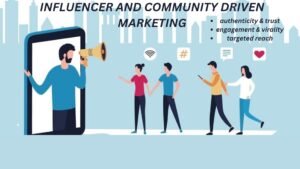
Omnichannel Marketing for Seamless Customer Experience
Omnichannel marketing is a strategic approach that ensures a seamless and unified customer experience across multiple touchpoints, including social media, websites, mobile apps, physical stores, and customer service channels in the future of digital marketing. By integrating these platforms, businesses create a frictionless journey where customers can switch between channels effortlessly without losing context. This approach enhances customer satisfaction, builds brand loyalty, and drives higher engagement by delivering consistent messaging, personalized interactions, and real-time support. With omnichannel marketing, companies can meet customers where they are, providing convenience and continuity that ultimately lead to increased conversions and long-term relationships in the future of digital marketing.
In today’s fast-paced digital world, the future of digital marketing, customers interacts with brands through multiple channels—social media, email, websites, mobile apps, physical stores, and more. With so many touchpoints, businesses must ensure a smooth, consistent, and engaging experience across all platforms. That’s where omnichannel marketing comes into play.
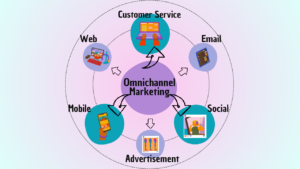
Conclusion
The future of digital marketing is dynamic, with AI, video content, the metaverse, and data privacy playing critical roles. To stay ahead, businesses must embrace these trends and refine their strategies for a more personalized, engaging, and ethical marketing approach. By staying informed and adaptable, brands can thrive in the ever-evolving digital landscape of 2025.
